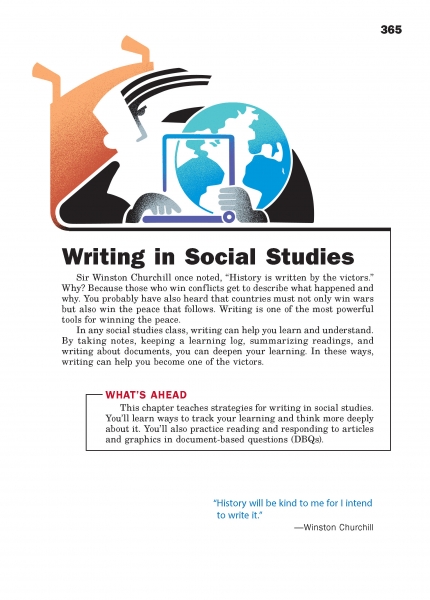Page 365 from

Start-Up Activity
When your students arrive, have them spend five minutes writing about what they learned in class the day before. This exercise will not only reinforce their learning but will also introduce today's topic.
Have volunteers share their observations. No two will be alike. Some will be more in-depth and accurate, others more general and inaccurate. Some will emphasize one point, and others another. Students may nod and smile when someone recalls something they had forgotten. Point out that yesterday's class lies somewhere in all of those accounts—multiple reports from eye-witnesses of the events of the previous day.
Writing in social studies involves exactly this process, synthesizing the perspectives of many to discover what happened and why.
Think About It
“History never really says good-bye. History says, 'See you later.'”
—Eduardo Galeano

Start-Up Activity
When your students arrive, have them spend five minutes writing about what they learned in class the day before. This exercise will not only reinforce their learning but will also introduce today's topic.
Have volunteers share their observations. No two will be alike. Some will be more in-depth and accurate, others more general and inaccurate. Some will emphasize one point, and others another. Students may nod and smile when someone recalls something they had forgotten. Point out that yesterday's class lies somewhere in all of those accounts—multiple reports from eye-witnesses of the events of the previous day.
Writing in social studies involves exactly this process, synthesizing the perspectives of many to discover what happened and why.
Think About It
“History never really says good-bye. History says, 'See you later.'”
—Eduardo Galeano


